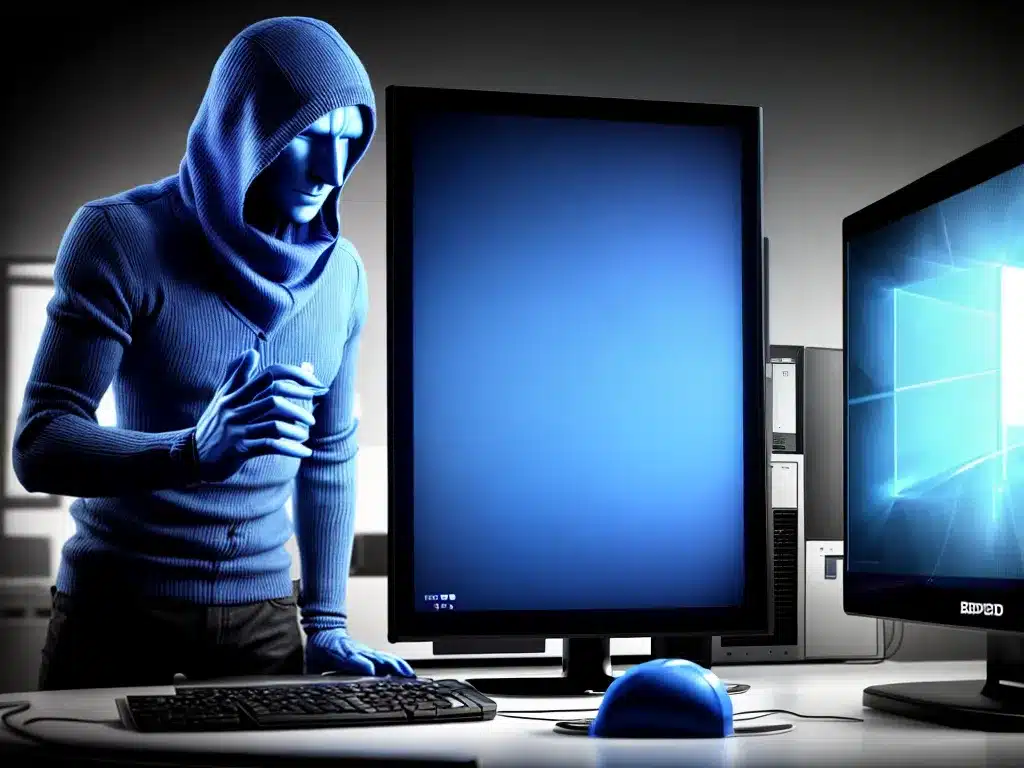
Introduction
A blue screen of death (BSOD) is an error screen displayed on Windows computers after a fatal system error causes the system to crash. BSODs go by different names depending on the version of Windows, such as a stop error or kernel error. They indicate a problem with the operating system rather than a hardware issue. While BSODs can be frightening, they provide information that can help identify and troubleshoot the problem. This guide covers common causes of BSODs and steps you can take to diagnose and resolve them.
Common Causes of BSODs
Faulty Hardware
Hardware issues like bad RAM, failing hard drives, and defective GPUs are common BSOD causes. The BSOD may display a specific error code pointing to the faulty hardware component.
-
Run hardware diagnostics to check the health of components like RAM and hard drives.
-
Test components like RAM and GPUs individually by removing extra modules. Faulty hardware will cause BSODs even outside the operating system.
-
Check for overheating issues, reseat components, and update BIOS, chipset, and hardware drivers.
Software and Driver Issues
Problematic software, device drivers, and Windows system files can also trigger BSODs. Recently installed drivers and software are common culprits.
-
Use System Restore to revert to a previous working state.
-
Boot into Safe Mode and uninstall recently added drivers, programs, and Windows Updates.
-
Check for updated and certified device drivers from manufacturer websites. Reinstall or roll back problematic drivers.
Malware and Viruses
Malware and viruses can modify system files or settings leading to BSODs. The BSOD may display error codes related to file corruption.
-
Run antivirus scans to check for and remove malware.
-
Use System File Checker to scan for corrupted files and restore them.
Faulty Windows Updates
Buggy Windows Updates can introduce BSOD-causing conflicts after installation. The BSOD will commonly mention a recent update.
-
Uninstall recently installed Windows updates.
-
Check Microsoft support site for known issues with latest updates.
-
Roll back to previous Windows version if major update is suspect.
Diagnosing BSODs
Analyze Error Codes
The error text on the BSOD provides the stop code and bugcheck parameters indicating the cause. Lookup the codes online for specific issues known to produce them.
-
Stop 0x0000003B and 0x0000007E often point to hardware failures
-
Stop 0x000000D1, 0x0000008E point to driver issues
-
Stop 0xC000021A and 0x000000F4 relate to Windows system files.
Examine Minidump Files
Minidump files containing debugging info for the error are saved in C:\Windows\Minidump. View them with debugging tools like WinDbg to pinpoint the faulty drivers or software.
Check Event Viewer
Check the System and Application sections of Event Viewer for recent critical errors that match the time of the BSOD. The errors provide insight into the issue.
Monitor Temperatures
Overheating components like the CPU and GPU can trigger BSODs. Monitor temperatures closely with hardware monitoring software like Speccy or HWInfo.
Test with Clean Boot
Perform a clean boot starting in Safe Mode with only essential devices and services. If BSODs stop, slowly re-enable startup items until you isolate the problem source.
Preventing BSODs
- Keep Windows and drivers updated
- Use reputable antivirus and malware scanners
- Regularly backup data and system images
- Don’t overclock components beyond stable settings
- Ensure proper airflow and cooling in computer
- Handle components gently and check for damage
- Install only certified drivers matched for hardware
Staying on top of maintenance, updates, and monitoring for issues can help avoid the headache of blue screens. But if they do strike, following structured troubleshooting can systematically uncover the source. With some time and patience, you can get your PC booted back up and stable again.












